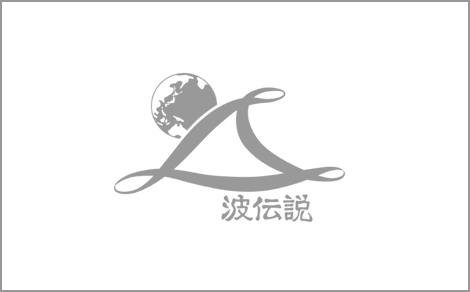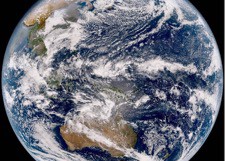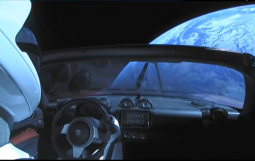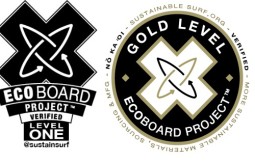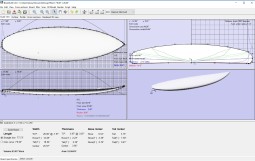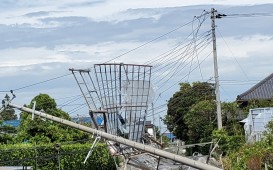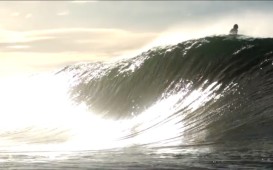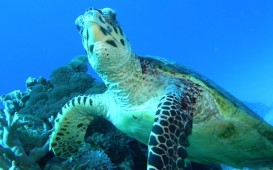Howzit Howzit…最近僕は少しの間ハワイに帰っていたよ。その時、日本からハワイまで8.5時間の飛行時間でそのほとんどが海の上だということに気付いた。ハワイで育って、遠く離れた他の場所のことを考えたことがなかったし、海がどのくらい大きいのかも考えたことはなかった。
そこで、僕が観たYouTubeからシェアしたかったものがあるんだ。
海については5つの大洋(太平洋、大西洋、インド洋、北極海、南極海)で構成されていることが一般的にわかっているよね。でも、実際海は1つの水の大きな塊だと考えることができるんだ。海は、地球の表面(約3億6千万平方キロメートル)の71パーセントを覆っている。宇宙から海を見渡すと、地球のほとんどを占めていることがわかる。海水は13億立方キロメートルの体積があり、生物圏(生き物が住んでいる場所)の99パーセントを含んでいる。海は他に比べることができないほど生命にとって重要なものなんだね。
また、海は特大級の地形を持っている。
そのうちの4つの有名なものは、
(1) 世界最大の海底山脈;太洋中央海嶺(かいれい)は、65,000 kmもの長さでアンデス山脈の10倍も長い。
(2)世界最大の滝;デンマーク海峡の海底にある滝は、コンゴ川のインガ滝(地上で最も大きい水量)の116倍以上もの水を運んでいる。
(3)世界最長の山;ハワイのマウナケア。海抜4200メートルの高さで、海面の下に隠れている部分が5800メートルにも及ぶ。これはエベレストよりも1000m以上も大きい。
(4)世界で最も深い谷;チャレンジャー海淵(かいえん)。11035メートルと深く、これはアメリカのグランドキャニオンよりも6倍も深い。
海がどれほど大きいのかは分かるけれど、それが人にとってどれほどの影響を与えるかは十分には知られていないよね。世界人口の50パーセントは沿岸部から100km以内の場所に住んでいて、その残りの人々は湖や川、沼の近くに住んでいるけれど、それは全て海へとつながっているんだ。
これは、地球上の全ての人が、海の状態や環境に影響を与えているということ。人間の影響は、海の表面から海底までの全ての部分で見ることができる。海はこの星を作っていると定義されているけれど、本当の意味では、僕たちが海を作っているんだ。(Scott Gass TED-Ed talkより引用)
長い間、人々は海に対して、「絶えることのない食料供給がある場所」、「有効な輸送ルート」、「便利なゴミ捨て場」だと考えてきた。しかし、そんな人たちの行動によって海が限界に近づいている。
その主な海への危惧は・・・
(1) 持続不能な漁業;世界の90パーセントの漁業による過剰な捕獲で、漁の対象ではない魚や他の動物が必要以上に死んでいる。
(2)保護が少ない;わずかに3.4パーセントしか保護されていない。
(3)観光と開発;沿岸部にはたくさんの住宅ができ、観光地と開発が進んだ。ビーチはリゾート地となり、そこに集まる人々の影響で、海の生物にも影響を及ぼしている。
(4)船舶;海は大きな道路であり、航行によるオイルの漏れや事故、アンカーによる損傷、不法投棄などが起こっている。
(5)石油と天然ガス;ドリルシップでの堀削作業は、海の生息環境や種の保存に影響を与えると言われている。
(6)汚染;地上の全てのものは最後には海へとたどり着く。海への害は、食物へと連鎖して人間へと行き着く。
サーファーとしてウォーターマンとして、僕は直接海とつながっていて、それらは僕の住む場所にも影響を与え、間接的には全ての人にも様々な方法で影響を及ぼす。最初のステップは、問題を理解し、他の人にもこの情報を広めること。そこから始まるんじゃないのかな・・・。
この情報をシェアして、外に出て波も捕まえにいこう。もちろん地元のサーフショップやマリンショップのサポートも忘れずにね!それではまた。A Hui Hou, Malama Pono!
(原文)
How big is the ocean?
Howzit Howzit…I recently returned for a quick trip back to Hawaii and while on the plane I got to thinking that it takes 8.5 hours to travel from Japan to Hawaii and the whole time is over the ocean. Growing up in Hawaii, I never thought about places away from Hawaii and never really thought how big is the ocean. This is something that I ran across while surfing YouTube and I wanted to share it. We generally think of the ocean as five component basins: Pacific, Atlantic, Indian, Artic, and Southern but actually the ocean is made up of one single huge body of water. The ocean covers about 71% of Earth’s surface (360km). Viewed from space the ocean is the dominant feature of our planet. The ocean holds 1.3 billion km3 of water, and contains 99% of the worlds biosphere (places where life exists). The ocean is massive and its importance to life is unparalleled. The ocean holds the greatest geological features of our planet. Four notable are:
(1) the world’s largest mountain range, the mid ocean ridge (65,000 km long or 10x longer than the Andes).
(2) the world’s largest waterfall; the Denmark Strait. It carries 116x more water over its edge than the Congo River’s Inga Falls (largest on land).
(3) the world’s tallest mountain; Hawaii’s Mauna Kea. 4200m above water and 5800m below. Much larger than Everest by 1000m.
4) the world’s deepest canyon; Challenger deep. 11035m deep which is 6x deeper than the Grand Canyon in the USA.
OK so we know it is big but it is not big enough to not be affected by humans. 50% of the world’s population live within 100km of a coastline and the remainder live close to lakes rivers, or swamps, all of which lead to the ocean. This means that virtually every single person on the planet influences the general health of the ocean. Human influence can be seen in every part of the ocean from the surface to the depths. The ocean defines our planet but in a real sense we define our ocean. (adapted from Scott Gass TED-Ed talk)
For centuries people have regarded the oceans as an inexhaustible supply of food, a useful transport route and a convenient dumping ground. But human activity, is pushing oceans to their limit. Major threats to the oceans include:
Unsustainable fishing: 90% of the world’s fisheries are overfished, while billions of unwanted fish and other animals dies needlessly.
Not enough protection: only 3.4% are protected.
Tourism & Development: Coastlines have been turned into housing and tourist development. Beaches turn into resorts and intense human presence takes its toll on marine life.
Shipping: the ocean is a huge highway, traffic leaves its mark as oil spills, grounded ships, anchor damage, rubbish dumps.
Oil & Gas: drilling pose major threat the marine habitats and species
Polution: everything on land eventually ends up in the ocean. Harming the marine food chain all the way up to humans.
As a surfer and waterman, I am directly connected to the ocean and all of these directly affect my habitat and indirectly affect everyone somehow. The first step to helping is to understand the problems and spread this information to others. Then go from there…
With that go spread this information and most of all get out and catch a wave. Don’t forget to support your local surf/marine shop! A Hui Hou, Malama Pono!


